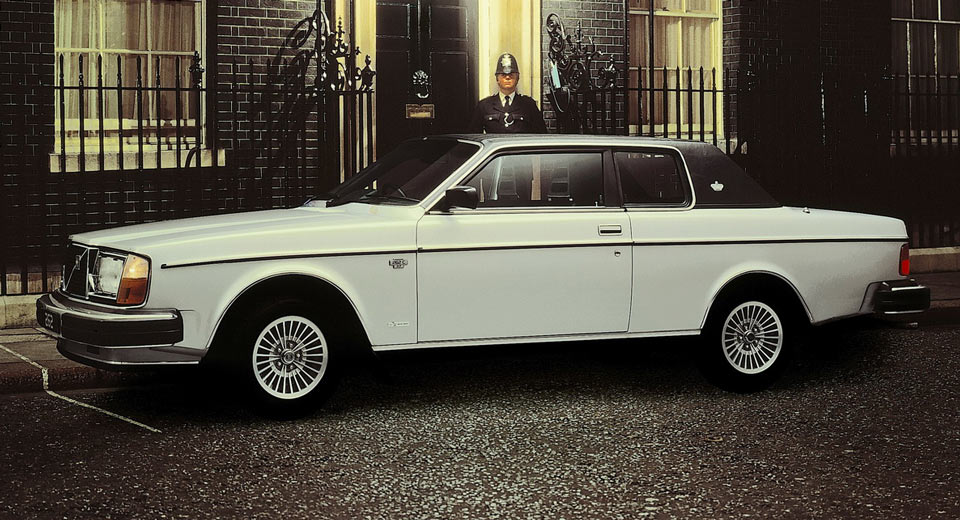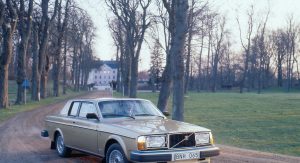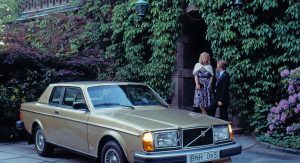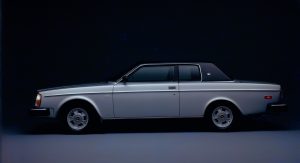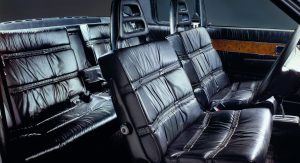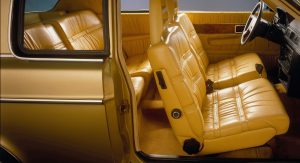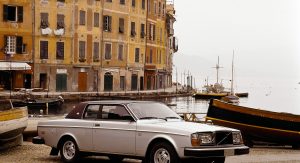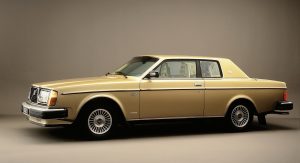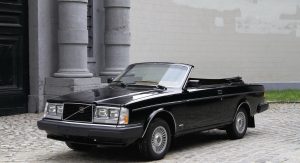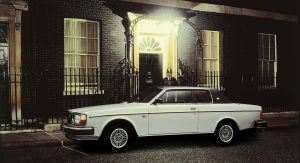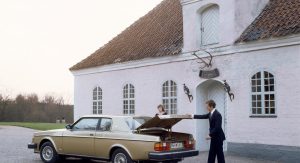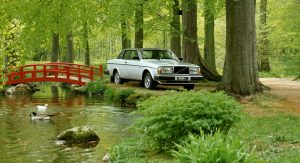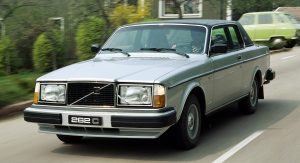Designed in Sweden and built in Italy, the Volvo 262C has just turned 40.
Introduced at the Geneva Motor Show back in 1977, four years after the 1800ES was discontinued, it owns its life to the brand’s CEO at the time, Pehr G Gyllenhammer, who saw it as an important model, especially in Volvo’s biggest export market, the USA.
It was penned by the company’s chief designer Jan Wilsgaard, who chose to use a 164 to test new interiors, rather than building a clay model, and after the initial work was carried out, it was then taken to Italian designer Sergio Coggiola’s company, in Turin, Italy. This is where the four-door was rebuilt into a two-door, with a lower roof, wrapped in vinyl, and wide C-pillars, adorned with three crowns – Sweden’s heraldic national symbol.
Being that a niche product like the 262C that was to be built in small numbers, didn’t fit Volvo’s plant in Gothenburg, its final assembly took place at Carozzeria Bertone, in Italy, where the 264TE limo was also assembled. Volvo shipped kits to Turin, where the bodies were modified, painted, and assembled, and as a reminder that Bertone built them, small badges were fitted on the lower edge of the windscreens.
Powering the Volvo 262C was a 2.7-liter V6 engine, with 141 horses, which was developed with Peugeot and Renault, built in Douvrin, France, and shared with other versions of the 260 series.
In the first couple of years, the car was offered solely with a silver metallic finish and a black vinyl roof, but later on, other shades became available, and in 1980, when it went on sale in the USA as the Volvo Coupe, the some colors were discontinued, including the initial one.
The Volvo 262C was eventually phased out in 1981, when it underwent its final modifications, during which a new color combo was introduced: two-tone gold and nougat, and 14 horsepower were added to the engine. By the time it left production, 6,622 cars were put together.



